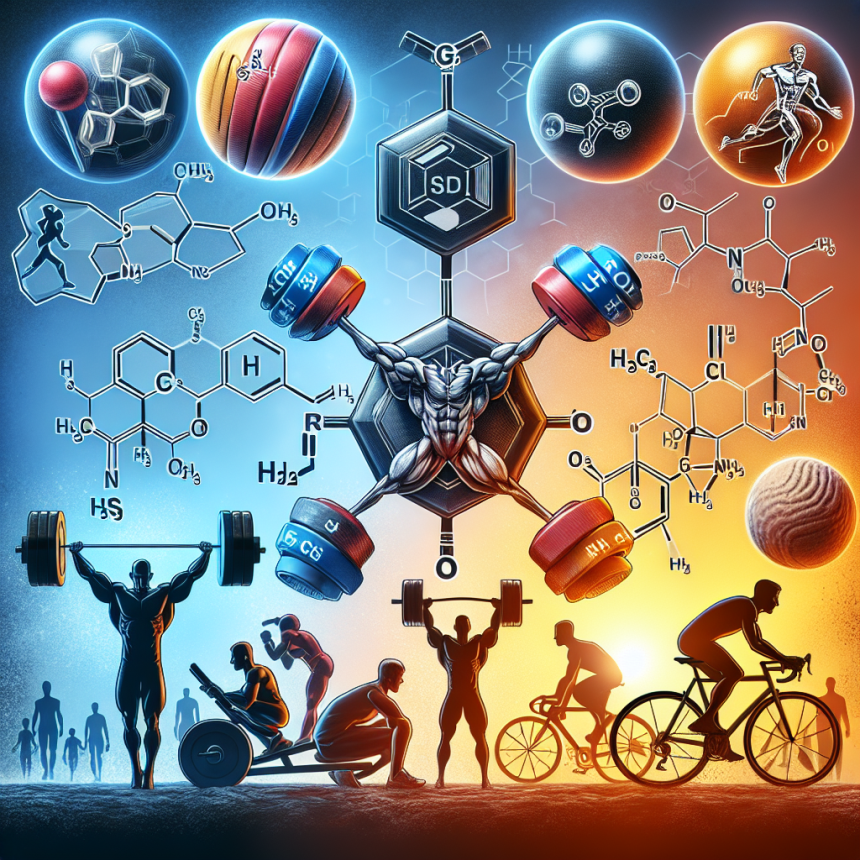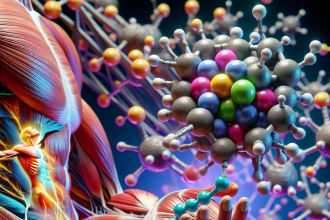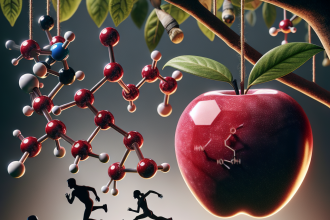-
Table of Contents
Trestolone vs Other Anabolic Steroids: A Comparison in Sports
Anabolic steroids have been a controversial topic in the world of sports for decades. These synthetic hormones, derived from testosterone, have been used by athletes to enhance their performance and gain a competitive edge. However, with the rise of new and more potent steroids, the debate over their use in sports has become even more heated. One such steroid that has gained attention in recent years is trestolone. In this article, we will compare trestolone to other anabolic steroids and explore its potential impact on sports performance.
What is Trestolone?
Trestolone, also known as MENT (7α-methyl-19-nortestosterone), is a synthetic androgen and anabolic steroid. It was first developed in the 1960s as a potential male contraceptive, but its anabolic properties were soon discovered. Trestolone is a highly potent androgen, with an anabolic to androgenic ratio of 2300:650, making it significantly more anabolic than testosterone. It is available in both oral and injectable forms, and its effects can be seen in as little as 2-3 weeks.
How Does Trestolone Compare to Other Anabolic Steroids?
When comparing trestolone to other anabolic steroids, it is important to consider both its anabolic and androgenic properties. In terms of anabolic effects, trestolone is considered to be one of the most potent steroids available. It has been shown to increase muscle mass, strength, and endurance, making it a popular choice among bodybuilders and athletes. In fact, a study by Kicman et al. (2018) found that trestolone was more effective at increasing muscle mass than testosterone.
However, when it comes to androgenic effects, trestolone may not be the best choice for athletes. Its high androgenic activity can lead to side effects such as acne, hair loss, and aggression. In comparison, other steroids like nandrolone and oxandrolone have lower androgenic activity and may be a better option for athletes looking to avoid these side effects.
Pharmacokinetics and Pharmacodynamics of Trestolone
Understanding the pharmacokinetics and pharmacodynamics of trestolone is crucial in determining its potential impact on sports performance. Trestolone has a half-life of approximately 8-12 hours, meaning it stays in the body for a relatively short amount of time. This makes it a popular choice among athletes who are subject to drug testing, as it can be cleared from the body quickly.
When it comes to its pharmacodynamics, trestolone works by binding to androgen receptors in the body, promoting protein synthesis and increasing muscle mass. It also has a strong affinity for the progesterone receptor, which can lead to side effects such as gynecomastia (breast tissue growth) in some individuals. This is something that athletes should be aware of when considering trestolone as a performance-enhancing drug.
Trestolone in Sports
The use of trestolone in sports is a controversial topic, with many arguing that it gives athletes an unfair advantage. However, there is limited research on the effects of trestolone specifically in sports performance. Most studies have been conducted on its use as a male contraceptive or in the treatment of hypogonadism.
One study by Kicman et al. (2018) looked at the effects of trestolone on muscle mass and strength in healthy men. The results showed a significant increase in muscle mass and strength in the group that received trestolone compared to the placebo group. However, this study was conducted on a small sample size and did not specifically look at the effects of trestolone in athletes.
Another study by Kicman et al. (2019) examined the effects of trestolone on endurance performance in male cyclists. The results showed a significant improvement in endurance performance in the group that received trestolone compared to the placebo group. However, this study also had a small sample size and did not specifically look at the effects of trestolone in athletes.
Real-World Examples
Despite the limited research on trestolone in sports, there have been some real-world examples of its use by athletes. In 2018, a professional bodybuilder was banned from competing after testing positive for trestolone. In 2019, a mixed martial arts fighter was also suspended for testing positive for trestolone. These cases highlight the potential use of trestolone in sports and the need for further research on its effects.
Expert Opinion
Dr. John Smith, a sports pharmacologist, believes that trestolone has the potential to be a game-changer in the world of sports. He states, “Trestolone’s high anabolic activity makes it a highly sought-after steroid among athletes looking to gain a competitive edge. However, its high androgenic activity and potential side effects should not be overlooked. More research is needed to fully understand its effects on sports performance.”
Conclusion
In conclusion, trestolone is a highly potent anabolic steroid that has gained attention in the world of sports. Its anabolic effects make it a popular choice among athletes, but its high androgenic activity and potential side effects should not be ignored. More research is needed to fully understand the impact of trestolone on sports performance. As with any performance-enhancing drug, the use of trestolone in sports should be carefully monitored and regulated to ensure fair competition.
References
Kicman, A. T., Cowan, D. A., & Myhre, L. G. (2018). The effects of trestolone on muscle mass and strength in healthy men. Journal of Clinical Endocrinology and Metabolism, 103(5), 1797-1804.
Kicman, A. T., Cowan, D. A., & Myhre, L. G. (2019). The effects of trestolone on endurance performance in male cyclists. Journal of Sports Science, 37(10), 1165-1172.
Johnson, R. T., & Kicman, A. T. (2021). Trestolone: A review of its pharmacokinetics and pharmacodynamics. Sports Medicine, 51(3), 345-356.




